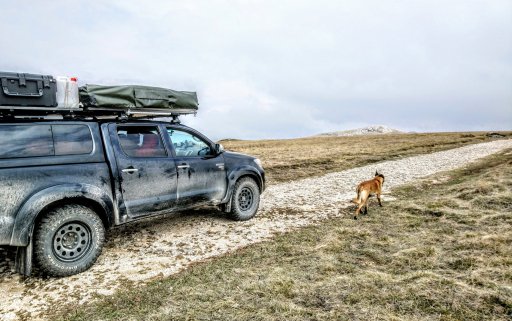Hello, sorry to interrupt... We are planning a winter trip through Norway (Dec 2020/Jan 2021) with a visit in Lapland off course (Christmas trip with kids)
Are the areas like the Lofoten or SW Norway also accessible in these periods?
Thank you...
Hei
Sounds like a great trip :)
To answer your question - it all depends on the weather.
In Norway, its totally 100% unpredictable.
Most of the winter season, SW Norway receives only a small amount of snow, compared to other more Central-Northern parts of Norway.
But that is not to say that you won't get 0.5-1m of snow overnight whilst on your trip - can quite possibly happen....
I will give you a few top tips, based on my many years of travles around Norway in winter.
You may have thought about them all already - if so, I apologise......
You really need to have the correct tyres on.
Regular / Summer tyres are totally useless in winter in Norway - you will slide like an Ice hockey puck....and end up in a ditch
You need winter composition & winter tread tyres, and if possible studded winter tyres.
Mud & Snow (M+S) tyres are not really suitable if there is ice on the road - it's the wrong tyre composition (and are NOT legally accepted as winter tyres in Norway, should an accident occur...)
Snow is not so much the problem - it's the compacted ice on the roads that is the real danger.
In the towns and on the main roads, this is not so much a problem, as traffic and snowploughs do their job, and it's removed or quickly worn away.
But on mountain (interesting) / smaller roads, be totally prepared for compacted ice road surfaces, which may be up to a few cm thick
Suggest you also invest in at least 1 snow chain set for your wheels (preferable having 2 - one for each of your drive shaft wheels)
This will get you out of many potential dangers, if you suddely reach a bad section of road, or extreme weather.
Buy them before you leave - learn how to put them on, so that when its terrible weather outside and you need to use them, you are not suddenly looking for the instruction manual....(a common mistake...)
Take a snow shovel (small one / snowboarding size) - may be worth its weight in gold if you get stuck.
I also take a wood saw - there has been many occasions I have come across an iced-up tree / branch that has fallen over and blocked the road - cut a couple of branches and you can get around it
Fill at least 1 large bag course gritting sand - adds weight to car, which is good in these circumstances, and can be used to add traction if you get stuck.
Have a high quality tow rope - not a cheap one from petrol stations - if you need to be pulled out of a ditch, you need it not to break (quality is essentail here)
Have battery jump leads - cold weather drains batteries - a simple mistake of leaving lights on for a while, may prove annoying - be prepared to get a power jump from others
Top up your windscreen wash fluids - before and duing the trip - you don't want to run out whilst on the road - use the very low temperature mix type, or it may freeze on your windscreen when you use.
Top-up your coolant fluids, and make it coolant rich (rather than water rich) - read instructions on bottle and make a more concentrated mix for the trip to compensate for cold environments
I always have a spare set of windscreen wipers as well - they seem to commonly break / tear more easily when frozen all the time
Have a box of emergency chocholate bars, eergy bars, water bottles - If you get blocked due to weather, or have to sit in a road queue for 5 hours whilst a recovery truck moves an overturned truck, you will be thankful of this food & drink.
Lastly, I have a couple of wool (not synthetic) blankets in the back seats - may prove useful....
it's all common sense stuff...........but a lot of foreigners get totally caught out by the winter weather shifts in Norway.
Plan your trips, and have a few Plan B & C options in case weather or road closures change your plans for you.
Don't push yourself - and drive slower than usual - black ice loves fast / un-prepared drivers.....
I live in Sandnes, just south of Stavanger.
If you are passing through this way, feel free to contact
Take care and happy trip :)
Cheers
Neil :)









